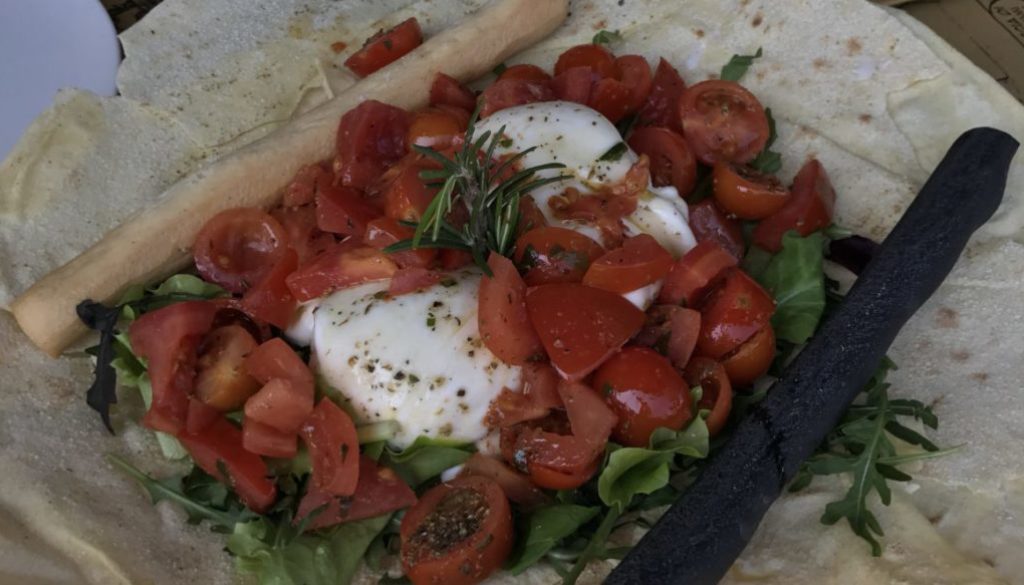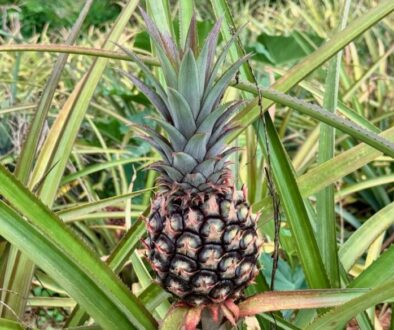Traveling as a Vegetarian
There’s nothing more frustrating than an unsatisfactory meal when you’re hungry, especially after hours of hiking or sightseeing. One can’t possibly enjoy a trip if a plain salad, boiled vegetables or bread is all there is to eat! It isn’t as easy for a vegetarian/vegan to find a good meal, but it’s not hard either.
It’s important to plan for food because a well-fed family will enjoy a trip a zillion times more than a tired one, especially if you’re traveling as a vegetarian. Plus experiencing different foods is just as fun a part of traveling as experiencing a place.
In, this post we share a few tips we have found to work well in our travels. It sounds cliche, but it’s true that a little bit of planning can go a long way. So get to know where you’re going. Here are some questions to consider –
Do the locals have a vegetarian diet?
While most countries are not predominantly vegetarian, many have large vegetarian communities. For e.g. In India vegetarian choices are plentiful, but it’s important to consider factors like spices and cooking methods. In Mexico, while most people aren’t vegetarian, it’s easy to find fresh beans, rice, salsas, tortilla, even in the remotest of hamlets. In some countries like Japan with a predominantly fish diet, it may be harder to find a good vegetarian meal.
With a little bit of research and a sense of adventure, we found some amazing food. For example vegetarian pintxos in Barcelona.
Are the locals familiar with a vegetarian diet?
Outside of large cities(sometimes even cities), not all people understand that fish, fish sauce, oyster sauce, chicken broth, eggs etc are not part of a vegetarian/vegan diet. Also, some folks don’t understand that picking out pieces of chicken or beef from a dish doesn’t make it vegetarian. So, it’s best to be specific and to ask the ingredients in the food. A little bit of genuine interest in the people and friendliness can go a long way. Most chefs cook to satisfy the customers and are happy to get creative and make amazing dishes. So, be friendly and learn about the food and the people who are cooking it.
What’s the best way to communicate with the locals?
Learn a few phrases? A large part of the world doesn’t speak English! Some places speak none at all. So, how does one communicate what a vegetarian meal entails? So, when visiting a non-English country it’s very important to learn at least some phrases for e.g. Asking for Shojin Dori in Japan will get an authentic Japanese vegan meal.
Rosetta Stone and many language learning tools are great to learn a language, even just the basics. Many guide books have a list of travel phrases for common languages.
There are many apps that will translate almost any language. Google Translate app from the App Store can read phrases in most languages and display it in English. Although is not entirely correct, it’s immensely helpful in reading menus, food labels and anything else.
What accommodation style will suit you best in that location?
The accommodation drives our food options to a great degree. Will you be staying a hotel, apartment, hostel, homestay, cottage, palace, resort, temple, restored ruin, campsite, cabin, RV, boat, treehouse, hacienda, B&B – the options are endless?
It’s amazing how many accommodation styles are available. Most of the time, the places where we stay are just as interesting as the sights themselves. Once a location and accommodation is decided, explore the food options. If it’s an apartment there may be a furnished kitchen. A hotel or B&B may have breakfast. There may be many restaurants around or none at all.
Are there common vegetarian restaurants around?
There are some vegetarian chain restaurants like Ananda, Govinda’s that are available in majority non-vegetarian destinations. Trip Advisor and Yelp are great sources to find restaurants reviewed by other travelers.
Does your family have a strong cuisine preference?
If your family has a strong preference for a certain kind of food and that cuisine is not easily available, cooking or carrying food along may be a good option. It can be surprising what we can find by just asking and looking.
While on a trip through Peru and Bolivia, we found some amazing local foods but not a single place with anything remotely Indian. After 15 days on the road our son was craving okra, his then favorite. So, finally when we reached La Paz, I scanned through the phone book for any Indian sounding name, so we could call them and hopefully they’ll welcome kids craving home food. but then the hotel concierge was able to find an Indian restaurant across town that was run by a Bolivian couple. They made fairly decent okra and roti. Turns out they had never been to an Indian restaurant but learned from an Indian friend and cookbooks. They were happy to get tips & feedback from us. It turned out to be a fun experience for us all!
Part of exploring different places and cultures is exploring foods, native or adapted to that place. It’s can be amazing to explore and discover foods we never imagined. It may taste alien initially, but it’s even more fun to integrate them into the family cuisine. In most places, locals are delighted to talk about their cuisine and how to find it.
One time we were able to find a vegan haggis in a little town pub in the Scotland highlands while watching the soccer world cup. Who knew there could be such a thing as vegan haggis! In Japan, we found the most authentic Japanese food in our temple stay in Koyasan that was like no other food in any country. In New Zealand, we found a wonderful restaurant call Huhu in the little town of Waitomo. It had the most delectable local foods.
Can you carry food from home?
If the customs and immigration policy of the destination country allows, carrying food from home is a great way to have some taste of home with you. Some common things I like to carry with me are snacks and quick meals like –
- Homemade dehydrated fruit.
- Some fun treats like vegan Christmas cookies.
- Indian snacks Bhel boxes, mathri, almond or cashew katli.
- Paratha or Thepla for a meal when we’re jetlagged in the early part of the trip.
- Partially cooked meals that can be quickly whipped into a full meal.
Take at least one favorite for each family member. It’ll also help with nostalgia for home food.
How often will you cook or assemble your meals versus eat out?
If your accommodation allows for cooking, cooking a few meals can make the trip feel more like home. When our kids were little, they were happy to eat out for lunch but would be too tired to wait for dinner at a restaurant table, especially if the service is slow. They would much prefer to unwind in PJs and get a familiar comfort food for dinner. It’s a bit more work but so much more satisfying.
On our Japan trip, we were so worried that we won’t find good vegetarian food, we carried a cooking pot and the dry ingredients for several meals like upma, khichdi, mac & cheese, pasta, rice pilaf. At home, we packed ziplock bags with a mix the dry ingredients for each meal. We bought chopped vegetable packets, butter, and some fruit in the local corner stores. So, putting together a delicious meal was much faster than going to a restaurant, ordering, waiting, eating, paying and coming back.
Will the accommodation has cooking supplies or utensils?
If you’re staying at an apartment or a suite with a kitchenette, they may already have cooking, serving and eating utensils as well as appliances. Once in Mexico City, we stayed in a fully furnished apartment hotel for 5 days. We stocked the refrigerator with fresh local fruit and vegetables. It was easy to whip up a quick meal or snack or pack a lunch. The hotel cleaned the kitchen while we went sightseeing. It’s easy to find apartments and houses with a kitchen on Airbnb.com, vrbo.com, and similar sites.
Does your accommodation provide a good breakfast?
As they say, breakfast is the most important meal of the day. Some hotels do amazing breakfast spreads. Some even include it in the price. If the accommodation does not serve breakfast, it can be hard for the early riser to wait until everyone is ready to go out. It’s always a good idea to buy a few snacks, maybe some cereal, milk and keeps it handy for those mornings. If there’s jet lag involved, a little snack can be more helpful than a midnight room service menu, if there is one.
What foods or ingredients are readily available locally?
While corner stores or grocery stores carry basic ingredients, a great way to learn about the place is to visit a market, like a farmers market. For e.g. London has amazing markets, but be sure to check the hours and days they are open. Some markets also have food stalls with great local or international flair.
Cooking on a trip brings out our creativity and family bonding. Learn quick recipes that the family will like on the go, get camping recipes or recipes for a campfire. Once while staying in a little town in Croatia all restaurants were closed due to a national holiday. We had a full kitchen, the little corner store had delicious bread but almost no vegetables beyond onion, garlic, tomatoes. So we had some delicious bruschetta and pasta with some improvised sides.
If you’re taking tours, will the tour providers serve meals?
If you’re taking a tour, request a vegetarian/vegan meal with the tour reservation. Don’t be shy to ask, most tour providers will cater to it if it’s possible. If none of the tours can provide a vegetarian option, pick a tour that doesn’t serve a meal, so you can eat before or after the tour. A free walking tour is a great option as it does not include food in the cost. If they do stop for a local treat, you have the option to purchase what you like.
If you’re strapped for time, bring a meal along. Plan ahead so, everyone is well fed and happy.
In a nutshell, while it can be challenging to get good food on the go, it’s also an opportunity to get creative and learn about the places and cultures through food.
Enjoy and please share your tips
Awesome Food Ideas for Vegans
- Traveling as a Vegan or Vegetarian
- Barcelona’s vegan and vegetarian foods
- Barcelona’s Vegetarian pintxos in Barcelona
- Italian vegetarian dishes and our 9-day trip
- Portugal’s vegetarian foods
- Lisbon’s Pastel de Nata
- Malta’s vegetarian foods on our 5-day trip
- Taiwan’s vegan foods
- Marathi village food on Sinhagad fort
- South Florida’s Vegetarian food choices
- London’s Borough Food Market on our 6-day trip






rollex slot
October 20, 2018 @ 2:48 am
Hello there! I simply want to offer you a big thumbs up for your excellent information you have right here on this post. I’ll be coming back to your website for more soon.